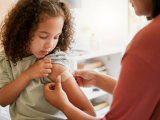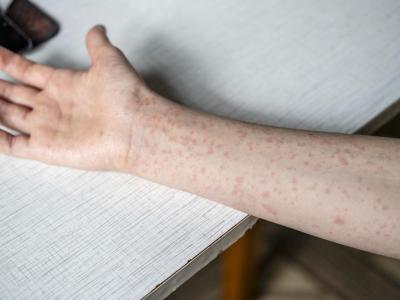Feb 16, 2011
Children's pandemic ED visits higher than expected but less serious
A study of 14 US children's hospitals found that emergency departments (EDs) during the height of pandemic H1N1 influenza in 2009 experienced 29% more total visits and 51% more flu-related visits than expected. However, visits for serious cases were lower than expected. The researchers, reporting in the current issue of Academic Emergency Medicine, recorded 390,983 ED visits in the 14 busiest weeks of the pandemic, of which 88,885 were for influenza-related illness (IRI). Of patients making ED IRI visits during surge weeks, only 4.8% were admitted to non–intensive care beds (70% of expected, P < 0.01), 0.19% were admitted to intensive care units (44% of expected, P < 0.01), and 0.01% received mechanical ventilation (5% of expected, P < 0.01). Patient factors associated with more-than-expected visits included ages of 2 to 17 years (highest in those 9 to 17), having insurance, being Hispanic or female, and having asthma. Lower-than-expected ED IRI visits were seen in children less than 2 years old, the uninsured, people with immune deficiencies or cardiovascular disease, and people living in Mid-Atlantic states. The study was supported by the National Institutes of Health and the Robert Wood Johnson Foundation.
Feb Acad Emerg Med abstract
Egg-allergic patients tolerate pH1N1 vaccine well
Pandemic H1N1 influenza vaccine was well tolerated in 59 children and young adults with egg allergies, according to a recent Canadian study. The patients, who were from 1 to 27 years old, were given skin-prick testing to the H1N1 vaccine. Only one patient, a 2-year-old boy, tested positive and, after consultation with his parents about the risks and benefits, was allowed to receive the vaccine according to guidance from the Canadian Society of Allergy and Clinical Immunology (CSACI) for those at higher risk of allergic reaction. CSACI recommendations state that patients at higher risk or with unknown egg-allergy status be given 10% of their H1N1 vaccine dose, then observed for 30 minutes, and, if no reaction is noted, given the remaining 90% of their dose. Patients at lower risk, according to CSACI, should be given the full dose and then observed for 60 minutes. The study authors, after giving the full dose to all patients and relying on a shortened, 30-minute observation period, saw no ill effects.
Feb 11 Allergy Asthma Clin Immunol abstract
Hong Kong finds novel H1N1 in 7 pigs but no reassortment
Hong Kong's Centre for Food Safety (CFS) said today that seven pigs tested positive for human pandemic H1N1 flu from November 2010 to January 2011 on routine surveillance but reports that "no significant genetic re-assortment of viruses was found." An unnamed CFS spokesman said the results, from tests conducted by the University of Hong Kong (HKU), were not a surprise. He said, "The CFS will continue to monitor reports of HKU's regular influenza virus surveillance programme on pigs and make announcements on a regular basis. Results will be announced immediately if there are significant public health impacts such as genetic re-assortment of viruses."
Feb 16 CFS report



















